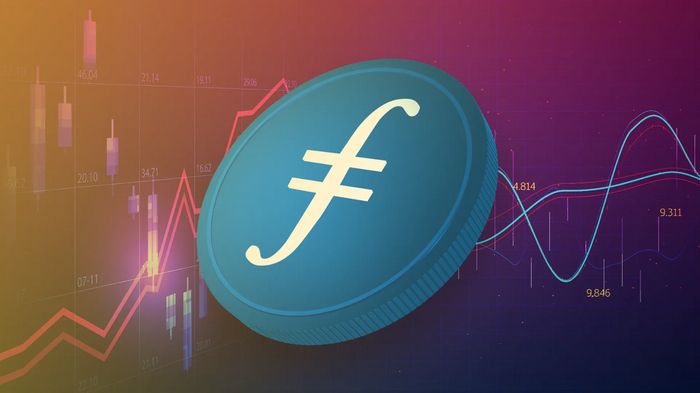-
 Bitcoin
Bitcoin $96,597.0979
2.11% -
 Ethereum
Ethereum $1,804.6867
1.92% -
 Tether USDt
Tether USDt $1.0002
0.02% -
 XRP
XRP $2.1161
-0.36% -
 BNB
BNB $598.4182
0.07% -
 Solana
Solana $145.2970
1.13% -
 USDC
USDC $1.0001
0.00% -
 Dogecoin
Dogecoin $0.1695
1.54% -
 TRON
TRON $0.2463
0.42% -
 Cardano
Cardano $0.6601
1.03% -
 Sui
Sui $3.2635
1.42% -
 Chainlink
Chainlink $13.5009
0.35% -
 UNUS SED LEO
UNUS SED LEO $8.7098
-0.02% -
 Avalanche
Avalanche $19.1267
-2.75% -
 Stellar
Stellar $0.2576
0.93% -
 Shiba Inu
Shiba Inu $0.0...01261
1.28% -
 Toncoin
Toncoin $2.9844
-0.67% -
 Hedera
Hedera $0.1730
0.19% -
 Bitcoin Cash
Bitcoin Cash $360.0948
0.85% -
 Hyperliquid
Hyperliquid $20.8398
1.13% -
 Litecoin
Litecoin $88.1330
6.67% -
 Polkadot
Polkadot $3.8861
-0.99% -
 Dai
Dai $1.0003
0.01% -
 Monero
Monero $281.5023
-0.76% -
 Bitget Token
Bitget Token $4.2361
-1.34% -
 Ethena USDe
Ethena USDe $1.0005
0.01% -
 Pi
Pi $0.5779
-0.26% -
 Pepe
Pepe $0.0...08054
2.91% -
 Bittensor
Bittensor $354.3024
-1.31% -
 OKB
OKB $50.7764
0.44%
what is filecoin virtual machine
Filecoin Virtual Machine (FVM), built upon Ethereum Virtual Machine (EVM) compatibility, empowers developers to integrate Filecoin's decentralized storage with Ethereum's vast ecosystem of tools and resources.
Nov 06, 2024 at 12:37 am

What Is Filecoin Virtual Machine?
Filecoin Virtual Machine (FVM) is a runtime environment based on the Ethereum Virtual Machine (EVM) that allows developers to build and deploy smart contracts and decentralized applications (dApps) on the Filecoin network. FVM enables the integration of Ethereum's vast ecosystem of tools and resources, bringing enhanced functionality and developer accessibility to Filecoin's decentralized storage platform.
Key Features of Filecoin Virtual Machine:
- EVM Compatibility: FVM provides seamless compatibility with the EVM, enabling developers to leverage existing tools, programming languages, and libraries designed for Ethereum.
- Smart Contract Execution: FVM allows the creation and execution of smart contracts, which are self-executing programs that facilitate complex agreements and automated tasks on the blockchain network.
- Increased Functionality: FVM expands Filecoin's capabilities by enabling developers to implement advanced features such as oracles, decentralized databases, and complex data processing logic.
- Expanded Ecosystem: FVM brings the vast and vibrant Ethereum ecosystem to Filecoin, opening doors to integrations with wallets, exchanges, decentralized finance (DeFi) protocols, and other Web3 applications.
Benefits of Using Filecoin Virtual Machine:
- Increased Development Options: FVM provides developers with a wider range of tools and programming languages, fostering innovation and enabling the creation of more complex and comprehensive applications.
- Improved Interoperability: FVM facilitates interoperability between Filecoin and other blockchains, creating opportunities for seamless data exchange and cross-platform collaboration.
- Simplified Development Process: FVM streamlines the development process by providing a familiar and well-established platform for Ethereum developers, reducing learning curves and accelerating development timelines.
- Enhanced Scalability: FVM enables the offloading of computation from the Filecoin network to dedicated virtual machines, improving scalability and reducing blockchain congestion.
How to Use Filecoin Virtual Machine:
- Set up a Filecoin Node: Install the Filecoin node software and configure it to connect to the Filecoin network.
- Install FVM: Obtain the FVM executable and install it on your system by following the provided instructions.
- Create a Virtual Machine: Command-line instructions should be provided to create a new FVM instance on your system.
- Deploy Smart Contracts: Develop and deploy smart contracts written in a compatible programming language (e.g., Solidity) to the Filecoin network.
- Use FVM Tools: Utilize a range of FVM-specific tools to interact with smart contracts, such as command-line utilities and integrated development environments (IDEs).
- Integrate with Filecoin: Leverage FVM to bridge the gap between decentralized storage and smart contracts, enabling the development of innovative applications.
- Utilize Ethereum Tools and Resources: Take advantage of the extensive ecosystem of Ethereum development tools, libraries, and frameworks to enhance FVM-based applications.
- Monitor and Manage: Monitor the performance of your virtual machines, manage smart contract deployments, and track transaction activity to ensure the smooth operation of your FVM applications.
By following these steps, you can leverage the Filecoin Virtual Machine to create and deploy smart contracts and dApps on the Filecoin network, enhancing functionality, interoperability, and scalability for decentralized storage applications.
Disclaimer:info@kdj.com
The information provided is not trading advice. kdj.com does not assume any responsibility for any investments made based on the information provided in this article. Cryptocurrencies are highly volatile and it is highly recommended that you invest with caution after thorough research!
If you believe that the content used on this website infringes your copyright, please contact us immediately (info@kdj.com) and we will delete it promptly.
- 21Shares Launches a New Exchange-Traded Product (ETP) That Provides Investors with Regulated Access to Crypto.com’s Cronos (CRO) Token
- 2025-05-08 00:35:12
- USD1 Stablecoin Has Officially Listed on HTX Exchange
- 2025-05-08 00:35:12
- Official Trump (TRUMP) Meme Coin: Only 58 Wallets Made Profits of $10 Million Each
- 2025-05-08 00:30:13
- Days before he was inaugurated for a second term, President Trump launched a meme coin
- 2025-05-08 00:30:13
- VeChain (VET) Draws Renewed Attention as It Moves Closer to Launching Its “Stargate” Protocol Update
- 2025-05-08 00:25:13
- World Liberty Financial (WLF) Initiates Next Phase of Token Distribution Strategy with USD1 Stablecoin Airdrop
- 2025-05-08 00:25:13
Related knowledge

What is Ethereum’s Slashing mechanism and how to punish malicious behavior?
Feb 20,2025 at 03:08am
Key PointsOverview of slashingDifferent types of slashing in EthereumIncentives and consequences of slashingIdentifying and reporting slashed validatorsOngoing discussions and potential improvementsEthereum's Slashing Mechanism: Punishing Malicious BehaviorEthereum's slashing mechanism is an essential tool for ensuring network security and punishing mal...

What is the verifier node of Ethereum and how to become a verifier?
Feb 19,2025 at 06:00pm
The Verifier Node of Ethereum: A Comprehensive GuideKey Points:What is a Verifier Node?How to Become a Verifier NodeResponsibilities and Rewards of a Verifier NodeMinimum Requirements for Becoming a Verifier NodePotential Difficulties in Running a Verifier Node1. What is a Verifier Node?A Verifier Node is an independent entity on the Ethereum network th...

What is Ethereum’s staking, and how to participate and earn money?
Feb 19,2025 at 04:37pm
Key Points:Understanding Ethereum's Staking MechanismSteps to Participate in StakingBenefits and Rewards of StakingSecurity and Risk ConsiderationsTechnical Requirements and Hardware OptionsPotential Challenges and Troubleshooting TipsFAQs on Ethereum StakingWhat is Ethereum's Staking?Proof-of-Stake (PoS) is a consensus mechanism used in blockchain netw...

What is Ethereum’s DAO (Decentralized Autonomous Organization) and how does it work?
Feb 20,2025 at 03:12am
Key PointsDefinition and Structure of a DAOGovernance and Decision-Making in DAOsBenefits and Use Cases of DAOsChallenges and Limitations of DAOsWhat is Ethereum's DAO (Decentralized Autonomous Organization) and How Does It Work?Definition and Structure of a DAOA Decentralized Autonomous Organization (DAO) is an innovative governance and management fram...

What is Ethereum's multi-signature wallet and how to improve security?
Feb 20,2025 at 02:18pm
Key Points:Understanding the Concept of a Multi-Signature WalletBenefits and Drawbacks of Multisig WalletsRequirements for Setting Up a Multisig WalletStep-by-Step Guide to Generating a Multisig WalletImplementing Strategies for Enhanced Security1. Understanding the Concept of a Multi-Signature WalletA multi-signature (multisig) wallet in the Ethereum e...

What is Ethereum's oracle and how to provide data for smart contracts?
Feb 21,2025 at 01:30am
Key Points:Understanding the concept of oracles in EthereumExploring different types of oraclesDetailed guide on how to provide data for smart contractsAddressing potential challenges and considerationsWhat is Ethereum's Oracle?Oracles are crucial components in the Ethereum ecosystem, enabling smart contracts to access real-world data and off-chain even...

What is Ethereum’s Slashing mechanism and how to punish malicious behavior?
Feb 20,2025 at 03:08am
Key PointsOverview of slashingDifferent types of slashing in EthereumIncentives and consequences of slashingIdentifying and reporting slashed validatorsOngoing discussions and potential improvementsEthereum's Slashing Mechanism: Punishing Malicious BehaviorEthereum's slashing mechanism is an essential tool for ensuring network security and punishing mal...

What is the verifier node of Ethereum and how to become a verifier?
Feb 19,2025 at 06:00pm
The Verifier Node of Ethereum: A Comprehensive GuideKey Points:What is a Verifier Node?How to Become a Verifier NodeResponsibilities and Rewards of a Verifier NodeMinimum Requirements for Becoming a Verifier NodePotential Difficulties in Running a Verifier Node1. What is a Verifier Node?A Verifier Node is an independent entity on the Ethereum network th...

What is Ethereum’s staking, and how to participate and earn money?
Feb 19,2025 at 04:37pm
Key Points:Understanding Ethereum's Staking MechanismSteps to Participate in StakingBenefits and Rewards of StakingSecurity and Risk ConsiderationsTechnical Requirements and Hardware OptionsPotential Challenges and Troubleshooting TipsFAQs on Ethereum StakingWhat is Ethereum's Staking?Proof-of-Stake (PoS) is a consensus mechanism used in blockchain netw...

What is Ethereum’s DAO (Decentralized Autonomous Organization) and how does it work?
Feb 20,2025 at 03:12am
Key PointsDefinition and Structure of a DAOGovernance and Decision-Making in DAOsBenefits and Use Cases of DAOsChallenges and Limitations of DAOsWhat is Ethereum's DAO (Decentralized Autonomous Organization) and How Does It Work?Definition and Structure of a DAOA Decentralized Autonomous Organization (DAO) is an innovative governance and management fram...

What is Ethereum's multi-signature wallet and how to improve security?
Feb 20,2025 at 02:18pm
Key Points:Understanding the Concept of a Multi-Signature WalletBenefits and Drawbacks of Multisig WalletsRequirements for Setting Up a Multisig WalletStep-by-Step Guide to Generating a Multisig WalletImplementing Strategies for Enhanced Security1. Understanding the Concept of a Multi-Signature WalletA multi-signature (multisig) wallet in the Ethereum e...

What is Ethereum's oracle and how to provide data for smart contracts?
Feb 21,2025 at 01:30am
Key Points:Understanding the concept of oracles in EthereumExploring different types of oraclesDetailed guide on how to provide data for smart contractsAddressing potential challenges and considerationsWhat is Ethereum's Oracle?Oracles are crucial components in the Ethereum ecosystem, enabling smart contracts to access real-world data and off-chain even...
See all articles





















































































